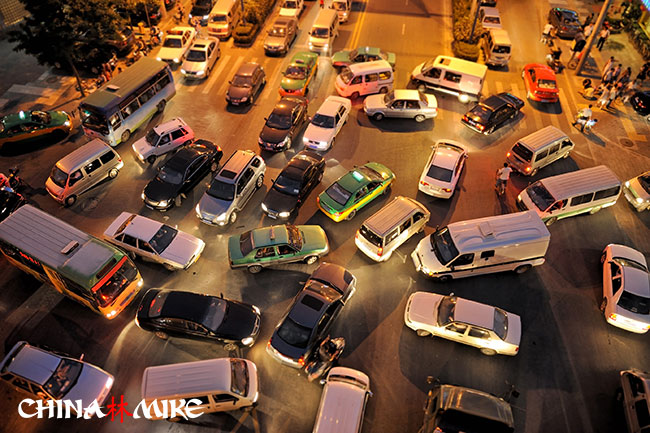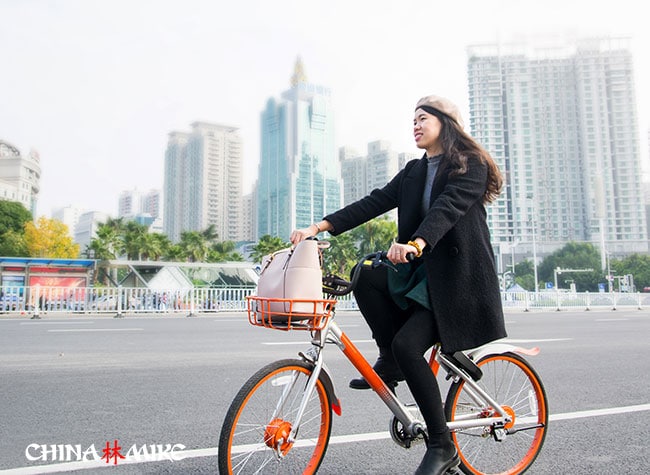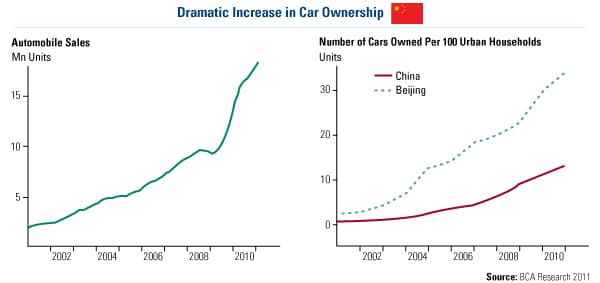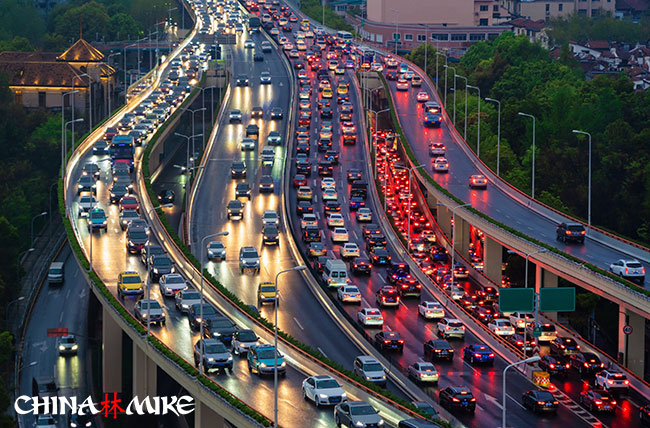There are more bikes and cars in China than ever before!
China is now the world’s largest automobile producer and consumer with more cars sold in China than any other country. Here are some facts and figures to back this up.

Bicycles and Electric Bikes in China
In addition to the fact that China manufactures most of the world’s bicycles, with the introduction of bike share programs, they also use more bikes than any other country in the world.
Consider this:
- 66% of the world’s 130 million bicycles made are in China. [Wikipedia]
- As of 2010, There are about 120 million electric bicycles in China…up from a few thousand in the 1990s. [The New York Times “An Electric Boost for Bicyclists“, Jan. 31, 2010]

- Chinese electric bikes can travel up to 30 miles an hour with a 50-mile range. [The New York Times “An Electric Boost for Bicyclists”, Jan. 31, 2010]
- About 90% of the over 20 million electric bikes sold worldwide are in China. In comparison, only about 200,000 are sold annually in the U.S. or about 1% of China’s sales. [Time Magazine “On the Streets of China, Electric Bikes Are Swarming” June 14, 2009]

More and More People Own Cars in China
Along with China’s economic rise, more Chinese citizens are now able to afford cars.
- China is now the world’s largest automobile producer and consumer. In 2010, China overtook the U.S. as the world’s largest auto market, ending more than a century of American dominance that started with the Model T Ford. In 2010, China also overtook Japan as the world’s top automaker and Germany as the world’s largest auto exporter. [Autodata Corp, China Association of Automobile Manufacturers, Wikipedia]
- In 2010, Chinese and Indian consumers together bought 19.9 million new passenger vehicles, 70% more than Americans did, according to J.D. Power. [Time Mag. “Your Next Job: Made in India or China” March 17, 2011 ]
- More vehicles will be sold in China in 2011 and 2012 than any other country. [The Economist online, December 27, 2010]
- From 1977 to 2008, China’s vehicle ownership increased from 1 million to 51 million. During that period, per capita disposable income for Chinese households increased 46-fold in nominal terms. [Bloomberg News, January 2010 ]
- In 2005, China’s number of private cars in China—about 10 million—was still only half the number of those in the U.S. at the start of the Great Depression.[The Economist “Dream machines” June 2, 2005 ]
China Car Ownership is On the Rise
Not surprisingly, this trend of car ownership in China is not slowing down. Despite all the headache of China’s infamous traffic jams, cars provide both comfort and economic status.
- China’s car ownership rate of about six cars per 100 people (6%) is tiny compared to rates in the U.K. (80%) and the U.S. (90%). [BBC News “Cracking China’s car market” May 17, 2007 ]
- Between 2005 and 2030, China’s car market is expected to grow ten-fold…which will drive up demand for diesel and petrol from 110 million to 500 million tons. [McKinsey & Co.; The Guardian: Jonathan Watts]
- The U.S. auto industry is bringing in huge revenues in China, where they’re seen as a “prestige” brand—particularly large American SUVs, which are seen as symbols of power. In 2010, for the first time in General Motors’ 102-year history, GM’s largest market wasn’t the US, but was China (where it sold 2.35 million vehicles, 136,000 more than in the US).[Wall Street Journal, January 2011 ]
Traffic Fatalities in China: Dangerous Roads
Of course, the rise in car ownership also comes with a rise in traffic accidents as well as fatalities.
- China’s roads have the highest death rates in the world. Every day, about 45,000 are injured and 680 people killed (compared to 115 deaths/day in the U.S.), according to data from World Health Organization. [The Economist “Dream machines” June 2, 2005; WHO ]
- As of 2007, China only has about 3% of the world’s vehicles…but accounts for 21% of the world’s traffic fatalities. [Wired Mag. “China Learns to Drive” Nov. 26, 2007 ]
- China ranks #2 worldwide in traffic deaths behind India (the two most populous countries). Close to 100,000 people die in China a year from traffic accidents. [Wikipedia “Traffic collision”]

Why Driving in China is Dangerous
Why is it that driving in China is significantly more dangerous than other parts of the world? Consider this:
- Getting a driving license in China is easy. Despite 70 hours of required training, “it is hard to fail the test” since “ill-paid examiners are readily bribable, with the instructors acting as middlemen and taking their own cut”. [The Economist “Dream machines” June 2, 2005 ]
- Chinese drivers don’t use turn signals and see windshield wipers and headlights as distractions. In a New Yorker article, Peter Hessler wrote that “(China) is a nation of new drivers, and the transition has been so rapid that many road patterns come directly from pedestrian life—people drive like they walk. They like to move in packs, and they tailgate whenever possible. They rarely use their turn signals. If they miss an exit on a highway, they simply pull onto the shoulder, shift in reverse, and get it right the second time. After years of long queues, Chinese people have learned to be ruthless about cutting in line, an instinct that is disastrous in traffic jams.” [The New Yorker “Wheels of Fortune: The People’s Republic learns to drive,” Nov. 26, 2007]
- During his visit to New York in 1983, the mayor of Beijing, Chen Xitong, observed that Manhattan drivers turned on their headlights at night. When he returned, he decreed that Beijing motorists do the same. [The New Yorker “Wheels of Fortune: The People’s Republic learns to drive,” Nov. 26, 2007]
- The Chinese commonly drink and drive…even during driving school! Hessler’s article describes a driving class, where “At noon the class had lunch at a local restaurant, where everybody drank beer, including the coach, and then they continued driving. One student told me that a day earlier they got so drunk that they had to cancel the afternoon class.” [The New Yorker “Wheels of Fortune: The People’s Republic learns to drive,” Nov. 26, 2007]
- Chinese drivers love to honk their horns! Hessler also reported that student drivers “had been instructed to honk whenever they pulled out, or made a turn, or encountered anything in the road. They honked at cars, tractors, and donkey carts. They honked at every single pedestrian. Sometimes they passed another car from a driving school, and then both vehicles honked happily as if greeting an old friend.”[The New Yorker “Wheels of Fortune: The People’s Republic learns to drive,” Nov. 26, 2007]
Final Thoughts | Bikes and Cars in China
As China’s economy grows, so does its reliance on electric bikes and cars. Long gone are the days that big cities like Beijing are packed with bicycles. China is now the world’s largest automobile user and producer, and the rates of car use continue to grow.
However, with more cars comes more accidents and traffic jams, a major hurdle China will need to face in the years to come.





